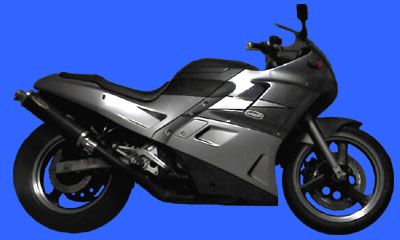One problem, as you can see in the picture.
The battery has small 'spade lug' type terminals for connection.
I have recently begun testing this type of battery in my bike,
(after the last OEM one lasted for 2.5 years).
I have made an adapter to run from the battery to the original cables.
I used standard auto electrical
(crimp wire end)
spade connectors attached to the battery terminals,
then some heavy gauge electrical cable
runs to another crimp end forked spade terminal.
A nut and bolt attaches the cable that originally
attached to the battery
to the forked lug
which runs to the new battery's terminals.
(see majestic artwork below)

There could be some danger with this if the terminal is not
secured properly. You might want to ensure it is a very good
connection all the way with the additional 'adaptor' cable and
it's
connectors. The safest way to go is to solder everything,
and make sure that the connection to the new battery's terminals
is very tight/strong and well insulated.
The battery will fit perfectly in length and height. It is less wide,
and this gives you a bit of space to place the new adapter interface
to the old cable
terminals
(i.e., the bolted bits, on the right of the above pic).
You also need to make sure that everything is very well insulated:
there is little point in setting your bike on fire.
The current retail on this for one unit is
about $25 to 36.50 (April 2005).
Try Jaycar (link above), Super Cheap Auto or similar.
It seems to be a more powerful battery, going by the
above
specs of 6.7 AH / 10 hr, as compared to the OEM/stock,
spec'ed in the manual at at 6.0/10hr.
( However my last OEM type battery was 7.0 AH.
All pretty similar specs.)
This battery is now installed in my bike
and there
seems to be plenty of cranking
power from it.
No more flat batteries.
Another idea would be to run adapter cables from the OEM battery into the trunk, and keep a charged battery (of the type above) in the trunk all the time. That way, if you ever run out of the normal battery, you just connect up the one in the trunk and away you go. (Make sure to keep the connections insulated in the trunk, both when in use and when not in use).

 Made
in Sydney, Australia
Made
in Sydney, Australia


